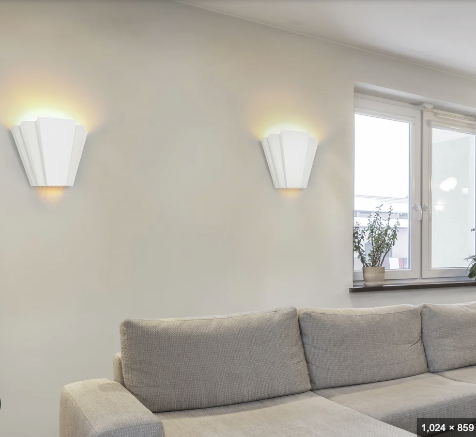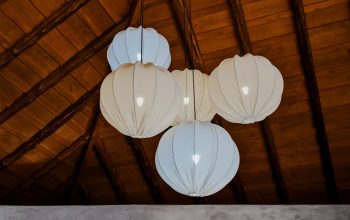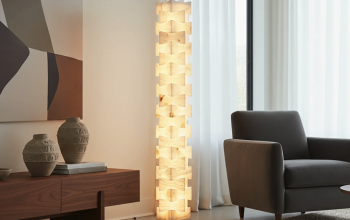Lighting plays a pivotal role in the overall ambiance and functionality of a drawing room, often serving as the backbone of interior design. It is not merely a practical necessity; rather, it is an essential element that can transform a space from mundane to extraordinary. The drawing room, typically a central gathering area in a home, requires a thoughtful approach to lighting to ensure it meets the needs of both aesthetics and utility.
Proper lighting can highlight architectural features, create focal points, and enhance the mood of the room, making it inviting for both residents and guests. Moreover, the right lighting can significantly influence how colors and textures are perceived within the space. For instance, warm lighting can soften harsh edges and create a cozy atmosphere, while cooler tones can lend a more modern and sophisticated feel.
The strategic placement of light sources Misls can also affect the perception of space; well-lit areas appear larger and more open, while darker corners can create intimacy or even drama. Thus, understanding the importance of lighting in the drawing room is crucial for anyone looking to create a harmonious and functional living environment.
Choosing the Right Wall Light for Your Space
Assessing Room Size and Wall Height
When choosing the perfect wall light for your drawing room, several factors come into play. The first consideration is the room’s size and the height of its walls. A spacious drawing room with high ceilings can greatly benefit from oversized wall sconces that draw the eye upward, creating a sense of grandeur and majesty.
Matching Your Wall Light to Your Decor Style
Another crucial aspect to consider is the style of your existing decor. Wall lights come in a wide range of designs, from contemporary to vintage, and selecting a fixture that complements your overall aesthetic is essential. For instance, if your drawing room features mid-century modern furniture, sleek and minimalist wall lights with geometric shapes would harmonize beautifully. On the other hand, if your decor leans towards traditional or rustic styles, ornate sconces with intricate detailing may be more suitable.
Considering Functionality and Lighting Needs
The functionality of the wall light is also an important factor to consider. Will it serve as ambient lighting to create a warm atmosphere, task lighting for reading, or accent lighting to highlight artwork or architectural features? The intended use of the wall light will significantly influence your choice. By carefully considering these factors, you can select a wall light that not only enhances the beauty of your drawing room but also meets your practical needs.
Different Types of Wall Lights to Consider
When exploring wall lights for your drawing room, it is essential to familiarize yourself with the various types available on the market. Sconces are perhaps the most common form of wall lighting; they can be mounted at various heights and come in numerous styles and finishes. Some sconces are designed to direct light upwards or downwards, while others provide a more diffused glow, making them versatile for different lighting needs.
Another option is wall-mounted lamps, which often feature adjustable arms or shades that allow for greater flexibility in directing light where it is needed most. These fixtures are particularly useful in reading nooks or areas where focused illumination is required. Additionally, there are decorative wall lights that serve as art pieces themselves; these can include sculptural designs or fixtures that incorporate materials like glass or metal to add visual interest to your walls.
For those looking to make a statement, consider using wall lights with unique features such as integrated LED technology or smart capabilities that allow for color changes and dimming options. These modern innovations not only enhance functionality but also contribute to energy efficiency, making them an attractive choice for eco-conscious homeowners.
How to Install a Wall Light in Your Drawing Room
Installing a wall light in your drawing room can be a straightforward process if approached methodically. Before beginning any installation, it is crucial to turn off the power at the circuit breaker to ensure safety during the process. Once you have selected the location for your wall light—ideally at eye level or slightly above—mark the spot on the wall where you will install it.
Next, you will need to prepare for wiring if you are replacing an existing fixture or installing a new one where no electrical box currently exists. This may involve cutting into the drywall to create space for an electrical box and running wiring from a power source. If you are not comfortable with electrical work, it is advisable to hire a licensed electrician to handle this aspect of the installation.
Once the wiring is in place and secured within an electrical box, you can attach the wall light fixture according to the manufacturer’s instructions. This typically involves connecting wires using wire nuts and securing the fixture to the wall with screws. After ensuring everything is properly connected and secured, restore power at the circuit breaker and test your new wall light to ensure it functions correctly.
Using Wall Lights to Create Ambiance
Wall lights are incredibly effective tools for creating ambiance in your drawing room. By strategically placing these fixtures throughout the space, you can manipulate light levels to evoke different moods depending on the time of day or occasion. For instance, soft, warm lighting can create a relaxed atmosphere perfect for intimate gatherings or quiet evenings at home.
In contrast, brighter lighting can energize the space for social events or family activities. Layering different types of lighting is key to achieving a well-balanced ambiance. Combining wall lights with other sources such as floor lamps, table lamps, and overhead fixtures allows for greater control over light intensity and distribution.
Dimming capabilities on wall lights can further enhance this effect; being able to adjust brightness levels at will enables you to tailor the environment to suit various activities—from lively conversations to movie nights. Additionally, consider using wall lights as accent lighting to draw attention to specific features within your drawing room. For example, placing sconces on either side of a piece of artwork can create a gallery-like effect that highlights your decor while adding depth to the overall design.
Similarly, illuminating architectural details such as crown molding or built-in shelves can add character and sophistication to your space.
Incorporating Wall Lights into Your Decor
Incorporating wall lights into your decor requires a thoughtful approach that considers both functionality and aesthetics. One effective strategy is to use wall lights as part of a cohesive design theme throughout your drawing room. For instance, if your decor features natural materials like wood and stone, selecting wall lights made from similar elements can create harmony within the space.
Another consideration is color coordination; choosing wall lights that complement or contrast with your existing color palette can enhance visual interest. For example, if your walls are painted in soft pastels, opting for metallic or darker-toned fixtures can create an appealing contrast that draws attention without overwhelming the space. Conversely, matching wall lights with other elements such as throw pillows or artwork can create a unified look that feels intentional and curated.
Furthermore, think about how wall lights can serve as decorative accents beyond their functional purpose. Unique designs or artistic fixtures can become conversation starters while adding personality to your drawing room. For instance, a vintage-inspired sconce with intricate detailing can evoke nostalgia and charm, while a sleek modern fixture can convey sophistication and elegance.
Maintenance and Care for Your Wall Lights
Maintaining your wall lights is essential for ensuring their longevity and optimal performance over time. Regular cleaning is one of the simplest yet most effective ways to keep your fixtures looking their best. Dust accumulation can dull finishes and reduce light output; therefore, it is advisable to wipe down fixtures periodically with a soft cloth or microfiber duster.
For glass shades or decorative elements, using a gentle glass cleaner can help restore clarity without damaging delicate surfaces. In addition to cleaning, it is important to check for any signs of wear or damage regularly. Inspect wiring connections and ensure that bulbs are functioning correctly; replacing burnt-out bulbs promptly not only maintains illumination but also prevents potential electrical issues.
If you notice flickering lights or any unusual behavior from your fixtures, it may be time to consult an electrician to address underlying electrical problems. Lastly, consider seasonal maintenance tasks such as checking outdoor wall lights for weather-related wear if applicable. Ensuring that outdoor fixtures are sealed against moisture and debris will prolong their lifespan and maintain their appearance throughout changing weather conditions.
Tips for Enhancing Your Space with Wall Lights
To truly elevate your drawing room with wall lights, consider implementing several design strategies that maximize their impact. First, think about layering light sources; combining wall lights with other forms of illumination creates depth and dimension within the space. For example, pairing sconces with table lamps allows you to adjust lighting levels based on activity while enhancing visual interest through varied light sources.
Another effective technique is utilizing dimmers on your wall lights; this feature provides flexibility in adjusting brightness according to mood or occasion. Dimming capabilities allow you to transition from bright task lighting during family gatherings to softer ambient lighting for intimate evenings effortlessly. Finally, don’t shy away from experimenting with placement; sometimes unconventional positioning can yield stunning results.
For instance, mounting sconces at varying heights along a hallway leading into your drawing room can create an inviting pathway while adding character to otherwise plain walls. Similarly, using wall lights in unexpected locations—such as above artwork or mirrors—can enhance visual appeal while providing functional illumination. By thoughtfully considering these aspects when incorporating wall lights into your drawing room design, you can create a space that is not only beautifully illuminated but also reflective of your personal style and preferences.


